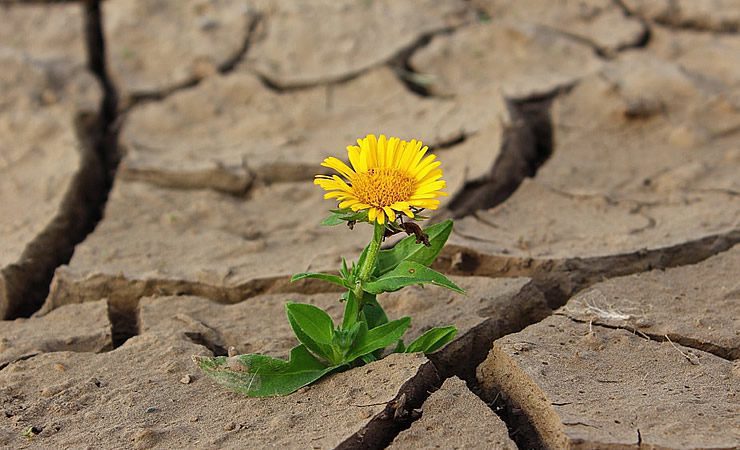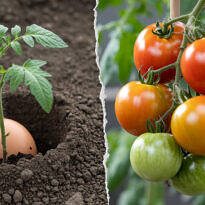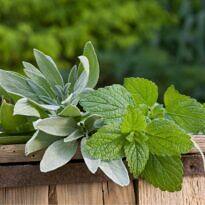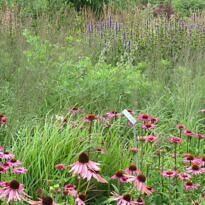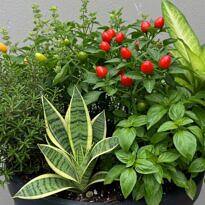Picture yourself returning from a serene vacation, the time away having provided a much-needed break from the bustling city life. As you step into your home, you’re greeted by your cherished potted garden, each plant reflecting vitality, a testament to the care they received during your absence. Yet, amid this verdant scene, a hidden tale of neglect unravels – that overlooked pot on the high shelf, deprived of water, now stands wilted and forlorn.
The Plight of a Wilting Plant
Contemplating the fate of a withering or desiccated plant might seem disheartening, but there’s often hope for revival, especially if the plant still showcases a hint of greenery.
Plants, as tenacious survivors, can generally withstand water scarcity better than excessive watering. In this particular case, the plant’s plight can be attributed to insufficient irrigation. Thus, the journey to breathe life back into it begins.
The Road to Recovery: Step by Step
- Relocating for Reprieve: The first step involves moving the plant away from direct sunlight, especially if it was exposed to the sun’s harsh rays during its dry period. This change reduces stress on the plant, allowing it to focus on recuperation.
- Prepping the Soil: Gently creating furrows in the soil using a spoon or another suitable tool serves as a conduit for water penetration. While doing so, take care not to disturb the fragile root system.
- Hydration Rejuvenation: Submerge the parched pot into a container of lukewarm to cool water. Lukewarm water, being more easily absorbed by the soil, helps rehydrate the plant efficiently. Monitor the process – once the water’s surface ceases to bubble, signaling that the soil is saturated, it’s time to proceed to the next step.
- Draining Excess: Removing the plant from the water, allow it to drain excess water thoroughly. This step is vital as prolonged waterlogging can exacerbate the issue, leading to root rot and further deterioration.
- Leaf Rejuvenation: Mist the leaves delicately using a spray bottle. This not only provides immediate relief to the wilted foliage but also encourages a more favorable humidity level around the plant.
Patience, The Virtue of Restoration
With the necessary steps taken, the journey to rejuvenation requires patience. Sometimes, visible improvements might not be immediate, but persistent care can yield positive outcomes. If, however, even after moistening the soil, there’s no discernible change, the damage might be irreversible. Yet, noticing leaves gradually regaining their vigor is a promising sign of successful revival. This process might take time – the chili plant showcased in a video demonstration took approximately 24 hours to regain its upright stance.
Beyond Revival: Pruning and Prevention
Once the plant has been revived and has regained its strength, it’s prudent to remove any dead or severely damaged leaves. This not only enhances the plant’s aesthetics but also redirects its resources towards healthier growth.
However, preventing a recurrence of this ordeal is equally crucial. While your plant-sitting assistant might have good intentions, no one understands your plants better than you. Each plant possesses unique requirements, and preemptive measures can make a significant difference. Consider implementing an irrigation system tailored to your plant’s needs – from simple self-watering setups to complex, app-controlled systems accessible from your phone.
Distinguishing Natural Wilting from Desiccation
It’s imperative to differentiate between the natural wilting of annual plants, which is an inherent part of their lifecycle, and wilting resulting from water deficiency. The former is physiological, occurring irrespective of watering practices, while the latter stems from neglect and dehydration.
The journey from a wilted, distressed plant to its vibrant resurgence requires care, understanding, and patience. Your role as a guardian and nurturer comes to the forefront during these times. With the right approach and knowledge, the tale of a near-fatal plant can transform into a narrative of triumph and resilience.

